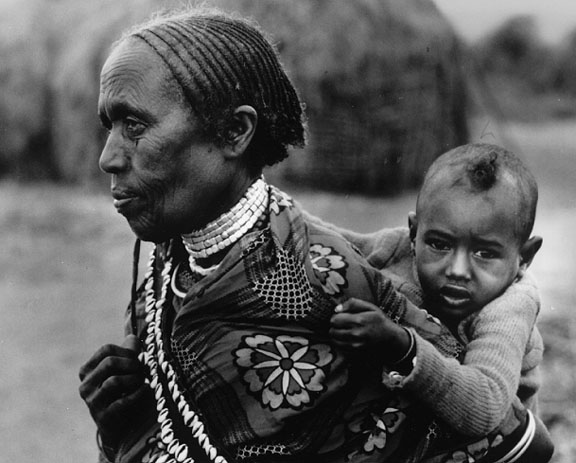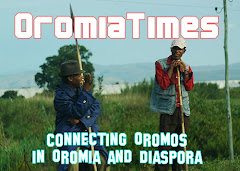“We’re already inside Mogadishu in some areas”, Prime Minister Ali Mohammad Gedi told reporters in Afgoye township, about 20 kilometers west of the coastal city, where he had been sounding out local chiefs.
“We’re starting to establish the security in Mogadishu. Everyone who has guns or armed militia will have to surrender them to the government”. There were no independent assessments of casualties but Ethiopian Prime Minister Meles Zenawi claimed up to 3,000 dead on the side of the Islamic Courts Union, and that the number of wounded could number up to 5,000.
The Islamists claimed hundreds of government troops had died. Correspondents saw large numbers of bodies at battlefields in Central and Southern Somalia.
The entry into the capital came nine days after Ethiopian forces had defied pressure from other African states by openly putting their air power and heavy artillery behind Somalia’s government, which had been left in control of just one town -- Baidoa -- after an Islamist onslaught earlier this year.
The Islamists, who had seized Mogadishu and most of Somalia from US-backed warlords, are perceived as a direct threat by Addis Ababa and are accused by Washington of having links with al-Qaeda.
Washington, for its part, steered clear of condemning Ethiopia for its involvement, saying Meles’s government had legitimate security concerns. As Islamist forces retreated from Mogadishu, pro-government fighters took control of its international airport, sea port and presidential palace, but Gedi and his government halted outside the city for consultations with religious, clan and civil society leaders before moving any further.
Many in Mogadishu fear renewed lawlessness after a relatively quiet six months under strict Islamist rule.
The Islamists, meanwhile, acknowledged retreating but pledged to launch a guerrilla war against the Western-backed government. Sheikh Sharif Sheikh Ahmad, head of the executive committee of the Supreme Islamic Council of Somalia (SICS), told Al-Jazeera television that “we have withdrawn our forces (from Mogadishu) and there are no Islamic Court forces. We did not leave the capital to chaos. We left it to avert heavy bombing because Ethiopian forces are practicing genocide against the Somali people”. As government and Ethiopian troops entered the city, many Islamist fighters swapped their uniforms for civilian clothing and removed their turbans.
Somalia disintegrated into lawlessness after the 1991 ouster of a dictator, when it was carved up among warlords and has since lacked a central government and defied all international bids to restore functioning institutions of state.
Meles said his forces would pull out “hopefully in the next few days, maybe in the next few weeks, but definitely not months... While we are there, we will help them try to stabilize Mogadishu. We will not let Mogadishu burn”.
In Washington, the United States called for a resumption of power-sharing negotiations between Somalia’s rival factions, saying that a stable government could not be achieved through violence.
“We remain concerned about the situation there”, State Department deputy spokesman Tom Casey said. “You’re going to have to have that government established on the basis of discussions and dialogue”.
UN aid on standby for 50,000 refugees
As the result of the conflict, as many as 50,000 refugees from fighting in Somalia could pour across borders into neighboring Ethiopia and Kenya, the office of the United Nations High Commissioner for Refugees (UNHCR) indicated.
As fighting in Somalia intensified, the UNHCR said it was mobilizing staff and resources in preparation for possible widespread displacement in the region. Noting that thousands inside Somalia fleeing the conflict were reported in a desperate situation, the UNHCR said: “Although no large-scale refugee movements from Somalia have yet been recorded in neighboring countries, UNHCR is immediately positioning relief items in the region for up to 50,000 people, as well as trucks and emergency staff.
“In addition to the immediate pre-positioning of relief items, UNHCR will also increase its existing stockpiles in the region by purchasing enough supplies for a further 100,000 people, refugees as well as internally displaced people”, said a press release from UNHCR headquarters in Geneva.
It said the agency was reinforcing its operational capacity in Northeast Kenya and in Ethiopia in response to the worsening humanitarian situation in Somalia, where thousands have been displaced by fighting between Ethiopian forces backing the transitional government and the Union of Islamic Courts.
The UNHCR said relief items, including plastic sheets and jerry cans for up to 50,000 people, were being positioned along the Somali border.
“UNHCR staff in Puntland, in the Northeast, report some 3,000 displaced people who fled the fighting further south”, the agency said. “UNHCR has also received reports of several thousand people displaced in the Bay, Hirann, Mudug, Juba, and Shabelle regions.
“The agency is particularly concerned about reports of civilians, including children, being forcibly recruited to join the fighting”.
A transitional government powerless to unite the country
The political institutions of Somalia’s transitional government, set up after laborious peace negotiations in 2004, have been unable to re-establish order in a country racked by civil war since 1991.
The symbol of the government’s powerlessness in an essentially lawless country is its location, not Somalia’s traditional capital Mogadishu, but rather 250 kilometers away in Baidoa.
The Somali government is recognized by the international community and has the support of its northwestern neighbor, Ethiopia, which on December 24 took the offensive against Somali Islamists fighting the transitional administration.
The Somali president, prime minister and parliament are unelected.
The Parliament consists of 275 members chosen by Somalia’s warlords and approved by the traditional chiefs proportionally according to the size of the clan -- the basic unit of Somali society.
The legislature was inaugurated on August 22, 2004, in Nairobi. It held its first session in Somalia in Baidoa 18 months later on February 26, 2006.
In October 2004, Parliament chose as president Abdullahi Yusuf Ahmad, a former faction chief. He chose a prime minister, Ali Mohammad Gedi, who has no political base.
The institutions, created by the National Transition Charter, were set up for five years, by which time elections should theoretically be organized.
It took two years of talks in Nairobi to create Somalia’s transitional government. Somalia has lacked an effective administration since the ouster of Barre.
Despite two years spent in trying to set up an effective government, Somalia is more divided than ever. The government only controls the Baidoa region, where there has been heavy fighting between government forces and Somalia’s Islamists.
The Islamists now control most of Central and Southern Somalia and have repeatedly threatened Ethiopia, which acknowledged attacking in self-defense.
Somaliland, a northwest region covering about a quarter of Somali territory, proclaimed its independence in 1991. And Puntland, a self-proclaimed autonomous region in the Northeast, also has its own administration.
http://www.mmorning.com

















No comments:
Post a Comment